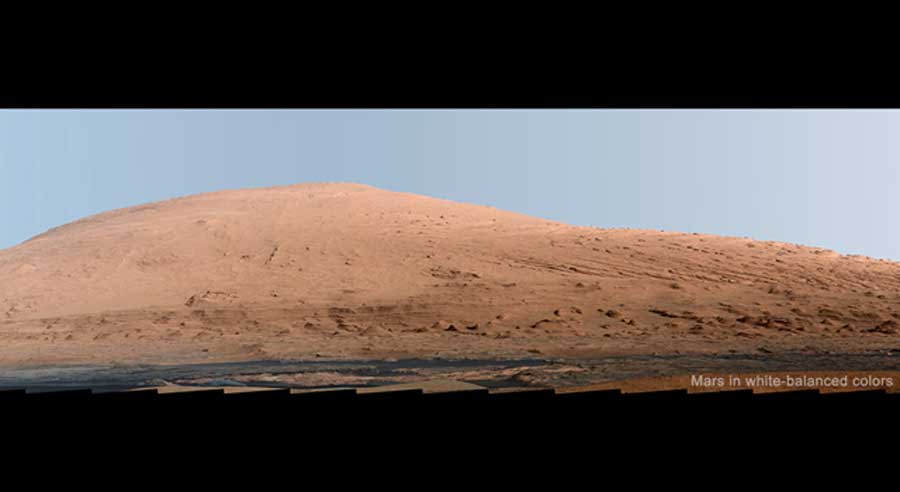A pair of mosaics assembled from dozens of telephoto images shows Mount Sharp in dramatic detail. The component images were taken by the 100-millimeter-focal-length telephoto lens camera mounted on the right side of Curiosity’s remote sensing mast during the 45th martian day of the rover’s mission on Mars — September 20, 2012.
This layered mound, also called Aeolis Mons, in the center of Gale Crater rises more than 3 miles (5 kilometers) above the crater floor location of Curiosity. Lower slopes of Mount Sharp remain a destination for the mission, though the rover will first spend many more weeks around a location called “Yellowknife Bay,” where it has found evidence of a past environment favorable for microbial life.
In the version of the mosaic that has been white-balanced, it shows the terrain as if under Earth-like lighting, which makes the sky look overly blue. White-balanced versions help scientists recognize rock materials based on their terrestrial experience. The martian sky would look like more of a butterscotch color to the human eye.
In both versions, the sky has been filled out by extrapolating color and brightness information from the portions of the sky that were captured in images of the terrain.
NASA’s Mars Science Laboratory project is using Curiosity and the rover’s 10 science instruments to investigate environmental history within Gale Crater, a location where the project has found that conditions were long ago favorable for microbial life.











